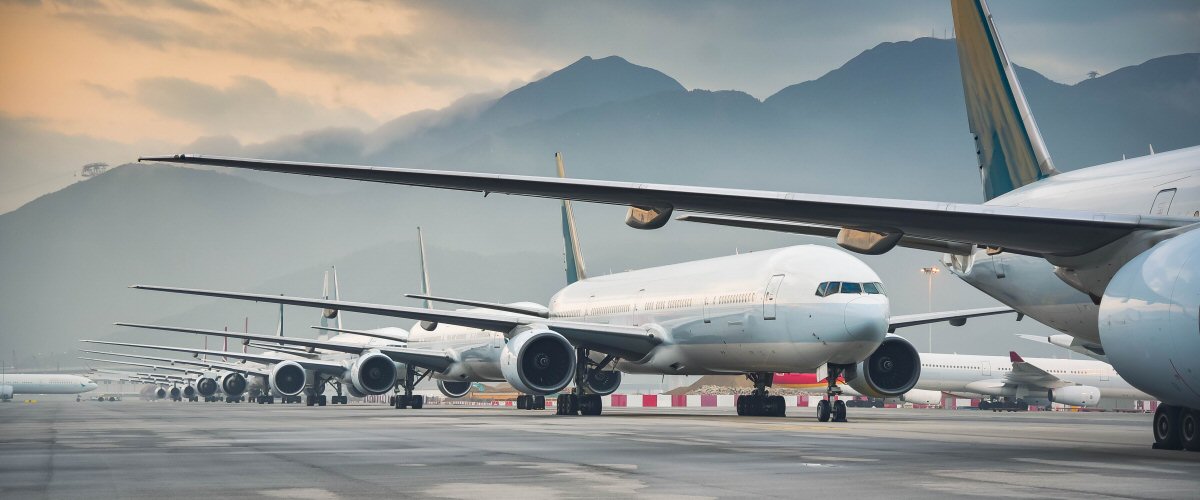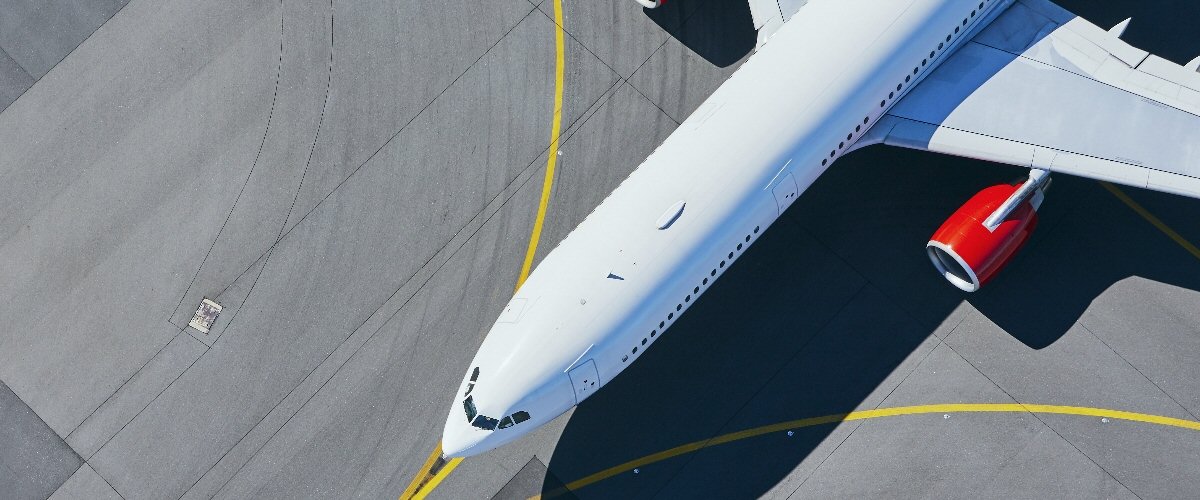Date: 31/05/2024 (Edition 10) Download PDF
.png)
In a scenario reminiscent of its past, SpiceJet’s active fleet continues its yoyo decline which begs the question of where they go from here. Over its 20-year history, the operator has made some bold decisions to grow in the Indian low-cost battleground yet continues to face critical cost barriers that force it to retrench its position.

Source: IBA Insight
As the IBA Insight chart above shows, the narrowbody fleet grew steadily up to the start of 2014 to reach 43 737NGs, whilst competition against Kingfisher and high fuel costs compounded the losses. As such, the fleet was halved. The subsequent failure of the competition and the oil price collapse triggered growth once more, although it took the further collapse of Jet Airways to provide the rapid lift (and market space) it required to reach its peak fleet size in December 2019. Since then, losses sustained during the global pandemic years have taken their toll leading to legal challenges from lessors looking to deploy in the current recovery cycle.
In a little over two years, the fleet has dropped by more than 55%, and 70% since the end of 2019 such that they have just a handful of MAX 8s (owned by ICBC, BOC and a wet-leased ALC aircraft from Corendon), 14 x 737-800s (mostly with Carlyle and some more wet-leased aircraft from Corendon), and a large Q400 fleet that is mostly now owned and in storage. A week doesn’t seem to go by without reading a headline that yet another lessor has settled on outstanding debts, or an aircraft has been repossessed. Of course, if the Indian courts had played ball, the fleet could have reduced much faster, increasing the likelihood of total failure. To top it all, fraud allegations triggered the departure of three senior commercial executives, including their Chief Commercial Officer.
But for what would normally signal a collapse for most other airlines, SpiceJet remains active in the market trying to secure capacity ahead of the summer schedule, fundraising, whilst fighting off IndiGo, a stronger Air India group, Vistara and Akasa.

Source: IBA Insight
Looking at the entire passenger market within India over 20 years, SpiceJet has certainly faced tough competition in this rapidly growing sector. Whilst 20 years ago, the total number of active passenger aircraft equalled just 150 units, today it's>650, with a further 180 stuck in storage. Adding in the 1,975 on the backlog for India (129 of which are with SpiceJet), the battle for third place will have to form an orderly line behind IndiGo’s and Air India’s capacity dominance. For SpiceJet, the future remains uncertain whilst they continue to battle with high costs and fewer chances for revenue given their fleet status.
In the past month, market movements have been muted but many March year-end results have come out, two of the highest profile of these being Wizz and Ryanair. Unlike the US LCC sector, the European counterparts reported shining news, with Ryanair hitting records again and Wizz back in the black for the first time since 2019. However, both company’s management commentary wasn’t so rosy, lamenting the scale of delivery delays for both Boeing and Airbus going forward.
As has been an enduring theme, Ryanair’s low leverage (Assets/Equity), which they decreased further to just 2.3, kept finance expenses low, allowing revenue to trickle down to net profit. For context, easyJet is at 3.6, whilst Wizz’s narrow equity position after sustained losses puts them at 59.7. Ryanair’s net profit of US$2.0bn (net margin 14.3%) was a 34.2% increase on last year, and almost treble 2019. This was helped by revenue increasing 24.8%, off only a 9% passenger increase, demonstrating a healthy yield rise! This is despite route data from IBA Airlines showing only minimal changes in the airline’s network year on year.
The total operating expenses increased by a similar amount to revenue (23.7%), led by a 32.0% increase in fuel. The airline’s reputation of cost control kept the other cost increases more in line with traffic increases. However, the airline’s strategy of heavy use of hedging has perhaps eroded some competitive advantage as they are locking in the higher prices at the fuel’s peak. Looking forward, CEO Michael O’Leary has highlighted that the fleet will only increase from the 2023YE number by 12 before the Q3 peak demand, 23 aircraft less than contracted with Boeing. To keep their aircraft flying, the airline is reportedly considering investing US$499m into a new maintenance facility in Lithuania.
Wizz Air’s net profit of US$385m (net margin 7.0%) isn’t in the same league as Ryanair’s but should be lauded for being significantly positive again, especially with the 24.5% up in capacity. The airline also improved profitability, moving on from its widely known fuel hedging lapse in FY22/23 (accounting for 45% of its CASK that year). Despite the capacity ramp-up, the fuel cost dropped by 5.1% this year. The airline is market-leading in cost, with the CASK down to 3.8 cents. Ryanair and easyJet’s last annual CASKs were 4.2 and 6.8 respectively. If they get back up to the 94% load factor of 2019 (currently 90%), they will compete on the RASK front.
Wizz highlights that their Israel lost revenue represents approximately US$87m. The airline also reported 45 aircraft grounded due to the GTF issues as of March 31st, fortunately, abated by 39 A321 deliveries. The airline expects 50 grounded through Q2 and Q3 this year. Unfortunately, Airbus delays, perhaps linked with sourcing the engines, put their FY24/25 deliveries down to only 21. It would take a long time to clear their 321 aircraft backlog at that rate!
The European carriers have reported another jump in profits, but with limited aircraft supply from both major OEMs, it is left to passenger yield for profitability, which ultimately has a limit for consumers. 2023 may have been the airline industry's peak for some time.
Following on from Neil’s discussion earlier this month around IndiGo investing in long-haul, India’s largest airline is set to make another significant shift by introducing a business class product “tailored for the country’s busiest business routes”. This is a deviation from the single-class cabin it has operated since its inception in 2006. While the airline has noted its first net profit since March 2019 of $986m (11.9% net margin), in 2024, it is hoping to increase profitability by capitalising on the premium segments. These are reportedly growing at 100-200% year on year in India.
The details surrounding IndiGo's new business class remain sparse, with more comprehensive information expected to be unveiled around August. The airline could opt for special business class seats like those of Air India and Vistara, akin to short-haul business class carriers such as Turkish Airlines and Qatar Airways. Alternatively, IndiGo might introduce a more budget-friendly business class, featuring the first few rows with blocked middle seats, similar to the business class setup within Europe. This solution provides the carrier with far greater flexibility, making maintaining high load factors easier. Given IndiGo’s budget-conscious approach, the latter scenario seems more likely, though the airline's emphasis on redefining business travel suggests a potentially more sophisticated offering.
This strategic shift comes as IndiGo prepares to expand its long-haul operations, with orders for Airbus A321XLRs and Airbus A350-900s. If successful in the short-haul operations, the new business product will surely make its way into the long-haul segment. It’s important to note that building a profitable long-haul product is arguably more difficult than creating a business one for short-haul.
However, this move does raise questions about whether deviating from its low-cost model might affect IndiGo's profitability. The transition to offering premium cabins is a gamble that could either enhance the airline's market position or challenge its established economic model.
Our regular update looks at the key trends and market indicators using data and analytics provided by IBA Insight.





凭借由获奖 ISTAT 认证评估师组成的庞大团队以及 30 多年累积的专有数据,IBA 在全球估值市场上处于领先地位。我们为全球范围内的一系列资产类型提供独立、公正的价值意见和建议,包括飞机、发动机、直升机、货机/航空货运、降落机位和预备件等。IBA 始终致力于超越客户的期望,我们的客观意见为贷款、资产收回、商业开发和再营销提供了必要的安全保障。

IBA 与全球领先的飞机和发动机租赁公司精诚合作。我们的专业建议植根于深厚的行业知识,因此 IBA 可以在投资周期的各个阶段提供支持,让客户放心无忧。从估值、机队选择、投资组合开发,到租赁结束时的退租和再营销,我们将全程协助客户完成整个租赁期的所有风险评估和资产管理活动。

航空投资往往错综复杂,会涉及大量财务风险,因此,放任资产不去管理绝对是下下策。无论是首次投资的新手,还是市场上驾轻就熟的资深投资者,IBA 都能帮助您克服各种资产类型的复杂性,让您更好地了解各种投资机会。我们可以与您携手合作,支持您的投资组合开发、多元化发展并满足您的战略需求。

30 多年来,IBA 与全球和地区航空公司紧密合作,提供估值和咨询服务、航空数据情报以及飞机和发动机的退租支持。我们在遍布世界各地的各种航空项目上与客户展开协作,满足他们的额外资源需求,随时随地提供所需的项目管理支持。

我们掌握着丰富资源并善于出谋划策,可为客户提供诉讼支持和纠纷调解办法,并根据客户的法律策略量身定制周密的解决方案。正是由于 30 多年来专有航空数据的积累、定期参与战略并购,以及丰富的飞机管理专业知识,我们能够经常接触到各方之间的典型争端领域。IBA 通过直接或与客户自己的法律团队合作的方式,在各个方面为客户提供帮助,从飞机损坏或损失的保险相关理赔,到常常在退租时发生的租赁商与承租商的纠纷。